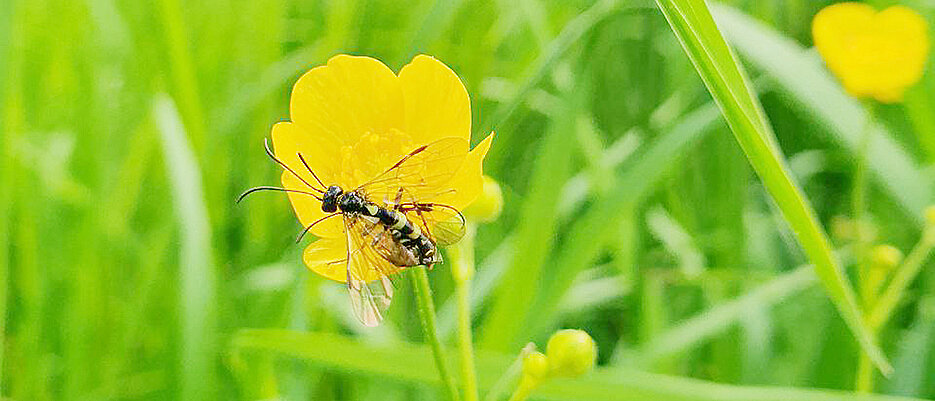Agriculture's impact on insect diversity is more severe than previously thought, according to a new study from the Julius-Maximilians-Universität Würzburg.

It has long been known that agriculture contributes to the decline in insect biodiversity. The loss of host plants, frequent mowing, and pesticide use all deprive many species of their habitats.
Now, a research team from the Julius-Maximilians-Universität Würzburg (JMU) has discovered-using innovative analytical methods-that the impact of agricultural land use on insect diversity is even more dramatic than previously assumed. The findings are based on an analysis of insect species from 400 families collected across a wide range of habitats in Bavaria.
The study was led by Professor Jörg Müller, Chair of Conservation Biology and Forest Ecology at JMU. The results have been published in the journal Proceedings of the Royal Society B.
44 Percent Drop in Insect Species Diversity on Farmland
Samples were collected using insect traps in both agricultural areas and near-natural habitats. The animals' genetic material was examined using DNA metabarcoding-a method that enables rapid identification of all species present in a given sample. For analysis, the researchers applied specially tailored statistical tools optimized for the unique properties of metabarcoding data, leading to more precise results.
One surprising outcome: a higher proportion of the actual species present in agricultural areas was detected, compared to the more diverse, near-natural habitats. In other words, sampling in farmland was more complete. After adjusting for these differences, the researchers identified a decline of up to 44 percent in total insect species diversity in agricultural landscapes.
Study Highlights Urgent Need for Biodiversity-Sensitive Land Use
But that's not all: for the first time, the new methods also revealed a loss of nearly 30 percent in evolutionary diversity-that is, the range of evolutionary relationships among species. This suggests that previous studies have likely underestimated the impact of agriculture on insect diversity-due to two key reasons.
First, because the completeness of insect community sampling in farmed landscapes is much higher, making differences appear smaller than they actually are. And second, because little data has been available on phylogenetic-or evolutionary-diversity at this scale until now. The new method allows researchers to systematically capture this often-overlooked dimension of biodiversity-and it too shows significant losses.
"This study underscores the urgent need for biodiversity-sensitive land use. A continued decline in insect diversity could have far-reaching consequences for the health and stability of ecosystems," sais Dr. Mareike Kortmann, lead author of the study. At the same time, the method provides a new, practice-oriented tool to more effectively monitor ecological changes in complex insect communities.
Publication
A short cut to sample coverage standardization in meta-barcoding data provides new insights into land use effects on insect diversity. Mareike Kortmann, Anne Chao, Chun-Huo Chiu, Christoph Heibl, Oliver Mitesser, Jérôme Morinière, Vedran Bozicevic, Torsten Hothorn, Julia Rothacher, Jana Englmeier, Jörg Ewald, Ute Fricke, Cristina Ganuza, Maria Haensel, Christoph Moning, Sarah Redlich, Sandra Rojas-Botero, Cynthia Tobisch, Johannes Uhler, Jie Zhang, Ingolf Steffan-Dewenter, and Jörg Müller. Proceedings B, 7. Mai 2025, DOI: 10.1098/rspb. 2024.2927






